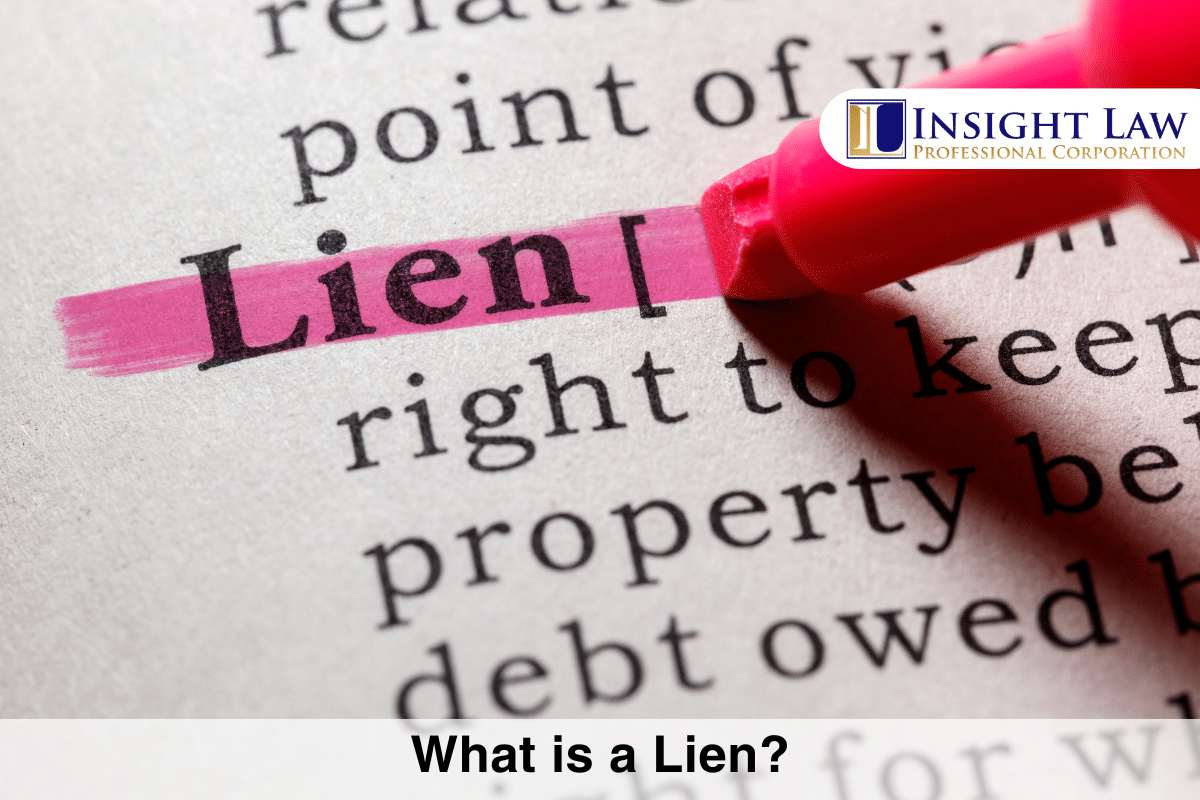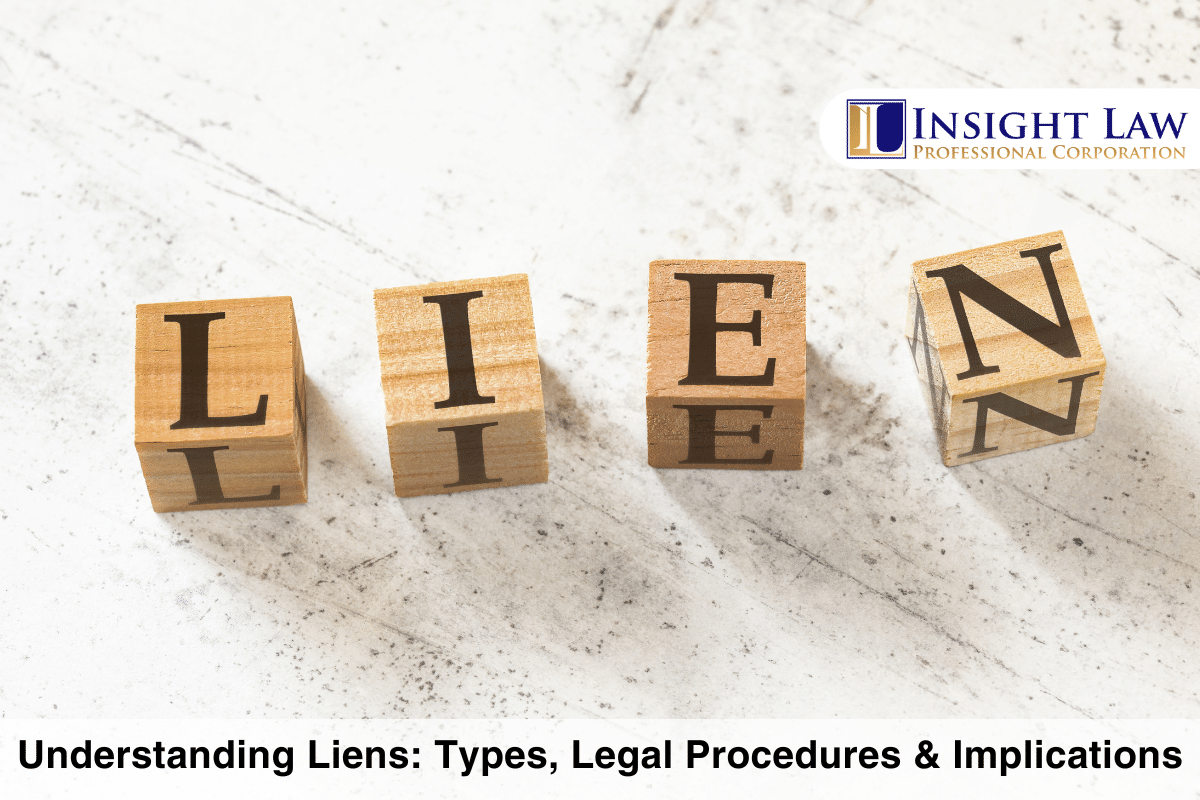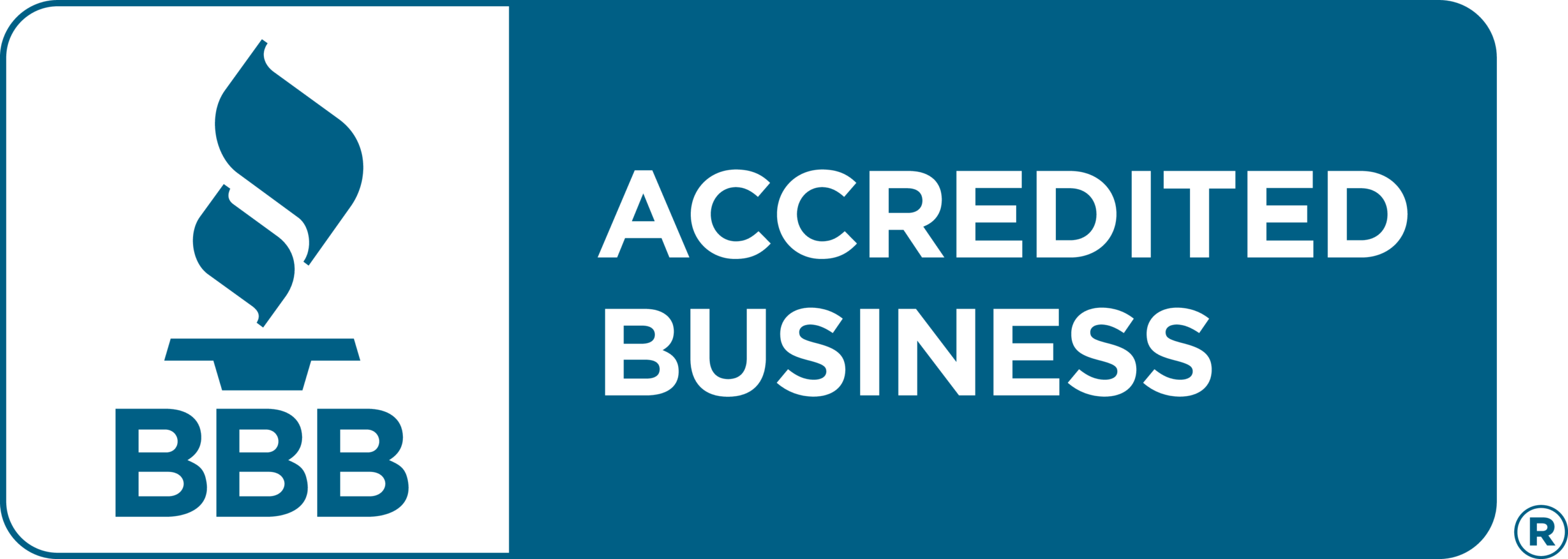Liens are legal tools that can drastically affect property ownership and financial stability. Whether you’re a creditor looking to secure payment or a debtor facing potential claims, understanding liens is important. This article cuts straight to the essentials: the different types of liens, the legal steps to enforce them, and the real-world impact they can have. Knowing how liens work isn’t just important—it’s essential for protecting your interests and navigating financial challenges effectively.
Insight Law Professional Corporation is a business law firm. Whether you’re just starting out, looking to expand, or facing legal challenges, our team is here to provide the strategic advice and legal solutions you need. If you need guidance from a Toronto corporate lawyer, contact us and see how our firm can help.
- What is a Lien?
- Legal Procedures for Liens
- Implications of Liens for Property Owners
- FAQs about Liens
What is a Lien?

A lien is a legal claim or right against a property, typically used as security for a debt or obligation. A lien on an asset effectively encumbers the property, meaning the owner cannot sell or transfer it without addressing the underlying debt. Liens are common in situations involving loans, unpaid taxes, or contractual disputes, where they serve as a powerful tool for creditors to ensure they are repaid.
There are different types of liens, each arising from distinct circumstances. For instance, a mortgage lien is created voluntarily when a homeowner takes out a loan to purchase a property, giving the lender a claim on the home until the mortgage is paid off. On the other hand, statutory liens, like tax liens, are imposed by law when obligations such as taxes go unpaid. These legal mechanisms ensure that debts are settled before the property can change hands.
The impact of a lien can be significant as it restricts the owner’s ability to manage their property freely and affects their credit and financial standing. Understanding liens is essential for anyone dealing with property, finance, or legal disputes, as they can influence everything from real estate transactions to personal and business finances.
The Legal Foundation of Liens
Liens are designed to protect creditors by ensuring they have a mechanism to recover debts, particularly when the debtor may be unwilling or unable to fulfill their financial obligations. This legal tool also serves as a critical safeguard in various industries, especially construction, where contractors and suppliers frequently extend credit for services and materials.
In Canada, the legal framework governing liens varies across provinces and territories. Each jurisdiction has its own set of statutes and regulations that define the creation, enforcement, and removal of liens. For example, in Ontario, the Construction Act governs construction liens, setting out the procedures for filing, enforcing, and discharging liens in the construction industry. Similarly, other types of liens, such as tax liens or judgment liens, are governed by specific statutes that outline the rights and obligations of both lienholders and property owners.
The Importance of Liens in Real Estate
Liens in real estate transactions are often seen as a protective measure for creditors, ensuring that debts related to the property are paid before the property can be transferred to a new owner. For property owners, liens can pose significant challenges, particularly when attempting to sell or refinance their property. A lien can complicate transactions, delay closing, and even lower the property’s market value.
In real estate, they act as a form of insurance for creditors, guaranteeing that their financial interests are secured. At the same time, they serve as a warning signal to potential buyers, indicating that the property may be subject to unresolved financial obligations. This dual function makes liens a powerful tool in the real estate market, one that all parties involved—buyers, sellers, lenders, and legal professionals—must understand thoroughly.
Types of Liens
Liens come in various forms, each serving a different purpose and subject to different legal rules. Each different type of lien carries its own set of implications and legal requirements. Below is the list of the common liens:
Property Liens
Property liens are perhaps the most well-known type of lien. Creditors place these liens on real estate as security for a debt. If the property owner fails to repay the debt, the lienholder may have the legal right to seize and sell the property to recover the amount owed.
Examples and Case Studies
Consider the case of a homeowner who fails to pay their mortgage. The lender, in this case, a bank, would place a lien on the property. This mortgage lien gives the bank the right to foreclose on the property if the homeowner defaults on the loan. This scenario played out across Canada during the 2008 financial crisis when many homeowners were unable to keep up with their mortgage payments, leading to a surge in foreclosures and a significant number of mortgage liens being enforced.
Another example involves property taxes. If a homeowner fails to pay property taxes, the municipal government may place a tax lien on the property. This lien ensures that the government can recover the unpaid taxes, plus any interest and penalties when the property is sold. In some cases, if the taxes remain unpaid for an extended period, the government may even have the authority to initiate a tax sale, where the property is sold to satisfy the outstanding tax debt.
Tax Liens
A tax lien is imposed by a government authority due to unpaid taxes. This type of lien can be imposed for various reasons, including unpaid income taxes, property taxes, or estate taxes. Tax liens are particularly powerful because they often take priority over other types of liens. This means that the government can claim the property before other creditors if the debt remains unpaid.
Legal Nuances of Tax Liens
Tax liens are governed by specific statutes that outline the procedures for their creation, enforcement, and removal. For example, under the Income Tax Act, the Canada Revenue Agency (CRA) has the authority to place a lien on a taxpayer’s property for unpaid income taxes. The CRA’s lien is a statutory lien, meaning it arises automatically by operation of law once certain conditions are met, such as the issuance of a notice of assessment and the taxpayer’s failure to pay the amount owed.
The CRA’s ability to enforce tax liens is a powerful tool in its collection arsenal. Once a tax lien is registered, it becomes a charge on the taxpayer’s property, and the CRA can take steps to enforce the lien, including seizing and selling the property to satisfy the tax debt. However, the CRA is also required to follow specific legal procedures, such as providing notice to the taxpayer and allowing them an opportunity to resolve the debt before enforcement actions are taken.
Mechanics Liens
Mechanics liens, also known as construction liens, are specific to the construction industry. They are placed by contractors, subcontractors, or suppliers who have not been paid for work performed or materials provided on a property. This type of lien ensures that those who contribute to improving a property are compensated for their efforts.
Mechanics Liens in Practice
Mechanics liens are a common feature of the construction industry in Canada, where they serve as a critical tool for contractors and suppliers to ensure they are paid for their work. The legal framework for mechanics liens is established under provincial legislation, such as the Construction Act in Ontario. These statutes set out the procedures for filing, enforcing, and discharging mechanics liens, providing a clear legal path for contractors and suppliers to recover unpaid amounts.
A notable case involving a mechanics lien occurred in Alberta, where a contractor filed a lien against a commercial property for unpaid work related to a major renovation project. The lien was challenged by the property owner, who argued that the work was substandard and that the lien should be invalidated. The court ultimately upheld the lien, finding that the contractor had substantially completed the work and was entitled to payment. This case underscores the importance of mechanics liens in protecting the rights of contractors and ensuring they are compensated for their contributions to a property.
Judgment Liens
A judgment lien is placed on a property after a court judgment has been made against the property owner for unpaid debts. This lien allows the creditor to take legal action, such as selling the property to satisfy the debt. Judgment liens are a common outcome of civil litigation, where a creditor sues a debtor for an unpaid debt and obtains a judgment from the court.
Judgment Liens: A Legal Perspective
Judgment liens are a powerful tool for creditors, providing them with a means of enforcing court judgments against debtors. In Canada, the legal framework for judgment liens is established under provincial legislation, such as the Execution Act in Ontario. These statutes set out the procedures for registering and enforcing judgment liens, providing creditors with a clear legal path to recover unpaid debts.
A judgment lien is typically created after a creditor obtains a court judgment against a debtor. This lien ensures that the creditor has a legal interest in the property and can take steps to enforce the judgment, such as initiating foreclosure proceedings or selling the property.
Judgment liens can have significant implications for property owners, particularly if they are unable to pay the debt. In some cases, the lien may result in the forced sale of the property, with the proceeds used to satisfy the judgment. This outcome can be devastating for property owners, underscoring the importance of resolving outstanding debts and avoiding litigation that could result in a judgment lien.
Property Liens
Property liens can be voluntary, such as mortgages, or involuntary, such as tax liens or judgment liens. Understanding how property liens are placed, the common reasons for them, and their legal implications is beneficial for anyone involved in real estate.
How Property Liens Are Placed
The process of placing a property lien typically involves a series of legal steps, starting with the identification of the debt and the legal grounds for the lien. The creditor must establish that the debt is valid and that the property owner has failed to satisfy the obligation. Once these conditions are met, the creditor can place the lien on the property.
The Role of Courts in Placing Liens
In many cases, placing a lien on a property requires the involvement of the courts. For example, a creditor seeking to place a judgment lien must first obtain a court judgment against the debtor. This judgment serves as the legal basis for the lien, providing the creditor with the right to enforce the debt against the debtor’s property. The creditor must then register the judgment, creating a lien against the property.
The court’s role in placing liens ensures that the process is fair and that the debtor’s rights are protected. The court will typically require the creditor to provide evidence of the debt and to demonstrate that the debtor has failed to satisfy the obligation. This legal scrutiny helps to prevent frivolous or fraudulent liens from being placed on the property.
Common Reasons for Property Liens
Property liens can arise for various reasons, reflecting the diverse ways property owners may incur debts. Some of the most common reasons for property liens include:
- Unpaid Mortgages: Mortgage liens are the most common type of property lien. When a homeowner takes out a mortgage, the lender places a lien on the property as security for the loan. If the homeowner fails to make mortgage payments, the lender can foreclose on the property and sell it to recover the outstanding debt.
- Unpaid Property Taxes: Municipal governments impose property tax liens when property owners fail to pay their taxes. If the taxes remain unpaid, these liens can result in the sale of the property.
- Unpaid Construction Work: Mechanics liens are common in the construction industry and are placed by contractors, subcontractors, or suppliers who have not been paid for work performed or materials provided on a property. These liens ensure that those who contribute to improving a property are compensated for their efforts.
- Court Judgments: Judgment liens arise from court judgments against a property owner for unpaid debts. These liens allow creditors to enforce the judgment by placing a lien on the debtor’s property and potentially selling the property to satisfy the debt.
Legal Implications of Property Liens
The presence of a lien on a property can have significant legal implications, affecting the property owner’s rights and the property’s marketability. Some of the key legal implications of property liens include:
- Restrictions on Sale or Transfer: A lien on a property can prevent the owner from selling or transferring the property until the lien is satisfied. This restriction is particularly significant in real estate transactions, where a lien can delay or even derail a sale.
- Foreclosure and Forced Sale: If a property owner fails to satisfy a lien, the lienholder may have the legal right to initiate foreclosure proceedings. This process involves selling the property to satisfy the debt, with the proceeds used to pay off the lienholder. Foreclosure can result in the loss of the property and significant financial hardship for the owner.
- Legal Obligations and Disclosures: Property owners are legally obligated to disclose the existence of any liens on their property when selling or refinancing. Failure to disclose a lien can result in legal action, including lawsuits from buyers or lenders unaware of the lien. This obligation underscores the importance of understanding and addressing liens before entering into real estate transactions.
- Priority of Liens: In cases where multiple liens are placed on a property, the priority of the liens determines the order in which creditors are paid. Tax liens, for example, often take priority over other types of liens, meaning the government can claim the property before other creditors. Understanding the priority of liens is important for both property owners and creditors, as it affects the likelihood of recovering debts.
Insight Law Professional Corporation is a real estate law firm in Toronto, Ontario. Contact our real estate lawyer if you need legal advice or have questions about liens.
Legal Procedures for Liens
This section provides a guide to the legal procedures for placing and removing liens in Canada.
Placing a Lien
Placing a lien involves several legal steps. Failure to adhere to these legal requirements can result in the lien being challenged or invalidated.
Legal Grounds for Placing a Lien
Before placing a lien, the creditor must establish that they have a legitimate claim against the property owner. This often involves obtaining a court judgment or meeting specific legal requirements, such as providing notice to the property owner or performing work that entitles the creditor to a mechanics lien.
The Role of Legal Agreements
In many cases, the legal grounds for placing a lien are established through contracts or agreements between the parties involved. For example, in the construction industry, a contractor may have a contractual agreement with a property owner to perform certain work on the property. If the property owner fails to pay for the work, the contractor may have the legal right to place a mechanics lien on the property.
Similarly, in the case of mortgages, the mortgage agreement serves as the legal basis for the lien. The mortgage agreement typically includes a clause that allows the lender to place a lien on the property as security for the loan. This lien remains in place until the mortgage is fully repaid.
Necessary Documentation
To place a lien, the creditor must file specific documentation with the relevant government office. This typically includes a lien claim form, which details the debt owed and the property against which the lien is being placed. The creditor may also need to provide evidence of the debt, such as contracts, invoices, or court judgments.
Filing Requirements Across Jurisdictions
The specific filing requirements for liens vary by jurisdiction, reflecting the diverse legal frameworks governing liens in Canada. In Ontario, for example, the Construction Act requires that a lien be filed within a specific time frame after the work is completed or the materials are supplied. Failure to file the lien within this period can result in the lien being invalidated.
In British Columbia, the Builders’ Lien Act sets out similar requirements, including the need to file a lien within a specific period after the work is completed. The act also requires that the lien be filed with the government office, ensuring that it is registered against the property and made a matter of public record.
Filing Process
Once the necessary documentation is prepared, the creditor files the lien with the appropriate government office. This step makes the lien a matter of public record, ensuring that other potential creditors and interested parties are aware of its existence. The lienholder must also provide notice to the property owner, informing them of the lien and the amount owed.
The Importance of Public Records
The filing of a lien with the appropriate government office ensures that the lien is publicly recorded and is often required to be legally enforceable. Public records provides transparency and ensuring that all parties are aware of the lien’s existence.
Public records are particularly important in real estate transactions, where buyers and lenders rely on these records to assess the property’s title and determine whether any liens are attached to the property. A failure to file a lien correctly can result in the lien being omitted from the public record, potentially rendering it unenforceable.
Removing a Lien
The removal of a lien requires following legal procedures and documentation to ensure that the lien is fully discharged and that the property is free of encumbrances. Since every case will be unique, it is adviceable to contact a lawyer to guide through the process.
Verification Process
Before a lien can be removed, the property owner must verify that the debt has been paid or otherwise resolved. This often involves obtaining a release or satisfaction of lien document from the lienholder, which acknowledges that the debt has been satisfied.
The Role of Negotiations
In some cases, the removal of a lien may involve negotiations between the property owner and the lienholder. For example, if the property owner disputes the amount owed or believes the lien was placed in error or is incorrect, they may negotiate with the lienholder to have the lien reduced or removed. These negotiations can be complex and may require the assistance of legal professionals to ensure that the property owner’s rights are protected.
Required Documentation
To remove a lien, the property owner must file specific documentation with the government office where the lien was originally registered. This typically includes the release or satisfaction of lien document, as well as any other required forms or affidavits.
Legal Standards for Documentation
The documentation required to remove a lien must meet specific legal standards to be accepted by the government office. This often includes notarization or certification of the documents to ensure their authenticity.
Legal Steps to Follow
Once the necessary documentation is filed, the lien is removed from the public record, and the property owner regains full control over the property. However, the property owner should ensure that all legal steps are followed correctly, as failure to do so could result in the lien remaining on the property. It is adviceable to contact a lawyer to get advice throughout the process.
Post-Removal Considerations
After a lien is removed, property owners should obtain a copy of the updated title or deed to confirm that the lien has been fully discharged. This step shows evidance that the property is free of encumbrances and that no lingering issues remain that could affect future transactions.
Implications of Liens for Property Owners
Liens can have far-reaching implications for property owners, particularly when it comes to property sales, credit, and legal responsibilities. Understanding these implications is beneficial for anyone who owns or is considering purchasing property. This section explores the various ways in which liens can impact property owners and offers practical advice on managing these challenges.
Impact on Property Sales
One of the most significant impacts of a lien is its effect on the process of selling a property. Here’s how liens can affect property sales:
Delays in Sale
A lien on a property can delay the sale process, as the lien must be resolved before the transaction can proceed. This often involves negotiating with the lienholder, paying off the debt, or obtaining a release of the lien. These steps can take time and may cause significant delays in closing the sale.
Example: Delayed Property Sales
Consider the case of a homeowner in Ontario who was in the process of selling their home. During the title search, a mechanics lien was discovered, placed by a contractor who had not been paid for renovations completed several years earlier. The homeowner had believed the matter was resolved but had not obtained a formal release of the lien. As a result, the sale was delayed by several weeks while the homeowner negotiated with the contractor to remove the lien. This case highlights the importance of addressing liens promptly and ensuring that all necessary documentation is obtained.
Another case involved a commercial property in British Columbia that was under contract to be sold. During the due diligence process, the buyer discovered a tax lien placed by the municipal government for unpaid property taxes. The seller was unaware of the lien, which had been placed after the taxes were not paid. The lien caused a significant delay in closing the sale, as the seller had to arrange for the payment of the taxes and obtain a release of the lien before the transaction could proceed.
Buyer Considerations
Buyers are often wary of purchasing property with an existing lien, as they may become responsible for the debt if the lien is not resolved. This can make the property less attractive to potential buyers and may result in lower offers or difficulties in securing financing.
Legal Protections for Buyers
Canadian law provides several protections for buyers who may unknowingly purchase property with an existing lien. For example, in many provinces, buyers are entitled to a clear title, free of any encumbrances, as a condition of the sale. This means that if a lien is discovered after the sale, the buyer may have legal recourse against the seller, including the right to rescind the transaction or seek compensation.
However, the responsibility for conducting due diligence typically falls on the buyer. This includes performing a title search and reviewing public records to identify any existing liens. Buyers are also advised to work with legal professionals to ensure that all liens are identified and resolved before completing the transaction.
Legal Requirements for Disclosure
Property owners are legally required to disclose any existing liens on the property to potential buyers. Failure to do so can result in legal action and may invalidate the sale. It is essential to be transparent about any liens and to work with a legal professional to ensure that all disclosure requirements are met.
The Consequences of Non-Disclosure
The failure to disclose a lien can have severe consequences for property owners. In addition to legal action from buyers, the property owner may face penalties for failing to comply with disclosure requirements. In some cases, the sale may be rescinded, forcing the owner to return the purchase price and cover potential additional costs incurred by the buyer.
Credit Implications
Liens can also have a significant impact on a property owner’s credit score and borrowing ability. Here’s how liens affect credit:
Effects on Credit Score
A lien can negatively impact a property owner’s credit score, particularly if it results from unpaid debts or judgments. This can make it more challenging to obtain financing for future purchases or to refinance existing loans.
Credit Reporting and Liens
In Canada, liens are typically reported to credit bureaus, where they can appear on the property owner’s credit report. This reporting can have a significant impact on the owner’s credit score, particularly if the lien is related to unpaid debts or judgments. A lower credit score can result in higher interest rates on loans, reduced access to credit, and difficulties in obtaining financing for future purchases.
The impact of a lien on a credit score can be long-lasting, particularly if the lien remains unpaid for an extended period. Even after the lien is resolved, it may continue to appear on the credit report for several years, affecting the owner’s ability to obtain credit. Property owners are advised to resolve liens promptly and to monitor their credit reports regularly to ensure that liens are reported accurately.
Future Borrowing Challenges
The presence of a lien on a property can make it more difficult for the owner to secure future loans, as lenders may view the lien as a sign of financial instability. This can limit the property owner’s ability to invest in additional properties or to access equity in their current property.
Example: Borrowing Challenges
Consider the case of a property owner in Quebec who sought to refinance their mortgage to take advantage of lower interest rates. During the refinancing process, the lender discovered a judgment lien related to an unpaid business debt. The lien had been placed several years earlier and had not been resolved. As a result, the lender declined the refinancing application, citing the lien as evidence of financial instability. The property owner was forced to pay off the lien before they could successfully refinance the mortgage.
Another example involves a real estate investor in Alberta who attempted to secure financing for a new property purchase. The investor had a tax lien on one of their existing properties, which was discovered during the lender’s due diligence process. The lender viewed the lien as a significant risk and declined the loan application. The investor was forced to resolve the tax lien before they could obtain financing for the new purchase.
Legal Recourse
Property owners who believe a lien has been placed in error or who wish to challenge a lien may have legal recourse. This often involves filing a lawsuit to dispute the lien or negotiating with the lienholder to have the lien removed.
Challenging Liens in Court
Challenging a lien in court can be a complex and time-consuming process, but it is sometimes necessary to protect the property owner’s rights. In Canada, property owners have the right to dispute a lien if they believe it was placed in error or if they can demonstrate that the debt has been satisfied. This may reuqire filing a lawsuit to have the lien invalidated or removed.
The success of a lien challenge depends on several factors, including the evidence presented by the property owner and the specific legal grounds for the lien. Property owners who wish to challenge a lien are advised to work with experienced legal professionals who can provide guidance and representation throughout the process.
FAQs about Liens
Here are answers to some of the most frequently asked questions about liens:
How can I find out if there is a lien on my property?
To determine if there is a lien on your property, you can start by conducting a title search. A title search involves examining public records to verify the legal ownership of the property and to uncover any encumbrances, such as liens, that may exist. This search can be done through a real estate lawyer. If there is a lien on the property then the title record should list any outstanding liens, including those related to mortgages, taxes, or judgments, giving you a clear picture of any claims against your property.
Can a lien be placed without notice?
In some cases, a lien can be placed on your property without your prior knowledge or explicit notice, depending on the type of lien and the jurisdiction’s laws. For example, tax liens can be imposed by the government if you fail to pay property taxes or income taxes, and in many jurisdictions, the government is not required to give extensive notice before the lien is recorded.
However, the lack of initial notice doesn’t mean that you are without recourse. Upon discovering an unexpected lien, you have the right to challenge it if you believe it was improperly filed or if the underlying debt is invalid. It’s important to act swiftly, as ignoring a lien can lead to more severe consequences, such as foreclosure. If you suspect a lien might be placed on your property, it’s wise to stay informed about any disputes or unpaid obligations that could trigger such action.
How long does a lien last?
The duration of a lien depends on the type of lien and the laws in the jurisdiction where the property is located. Some liens, like mortgage liens, last until the underlying debt is fully paid off. Once the mortgage is satisfied, the lien is typically released, allowing the property owner to clear the title. Tax liens, imposed by government authorities for unpaid taxes, can remain in effect for several years, often until the debt is paid or the property is sold to satisfy the tax obligation. In many cases, tax liens can be renewed if the debt remains unpaid, extending their impact on the property.
Other types of liens, such as mechanic’s liens or judgment liens, may have a set expiration date determined by provincial law. For example, a mechanic’s lien might last for a specific number of years but can be extended if legal action is taken within that timeframe. Judgment liens, which result from court rulings, also have varying durations depending on the jurisdiction and can sometimes be renewed if the debt remains unresolved. It’s crucial for property owners to understand the specific rules governing liens in their area, as letting a lien linger can complicate future property transactions and legal proceedings.
Can I sell my property if there is a lien on it?
Selling a property with a lien on it is possible, but it can complicate the transaction. When a property is sold, the lien typically must be satisfied before the sale can be completed. This means that the proceeds from the sale will first go toward paying off the lien, with the remaining balance going to the seller. In some cases, the lien amount can exceed the sale proceeds, creating a situation where the seller may need to bring additional funds to the closing table to clear the lien and complete the sale.
It’s important to disclose any liens to potential buyers early in the process to avoid surprises that could derail the transaction. Buyers are likely to discover the lien during the title search, and undisclosed liens can lead to legal issues or delays. In some instances, you may be able to negotiate with the lienholder to settle the debt for less than the full amount owed, facilitating the sale. Consulting with a real estate lawyer can help ensure that all liens are properly addressed and that the sale proceeds smoothly despite the encumbrance.
How We Can Help
Insight Law Professional Corporation is a real estate law firm located in Toronto. Contact us if you need assistance or have questions about a lien.
The information provided above is of a general nature and should not be considered legal advice. Every transaction or circumstance is unique, and obtaining specific legal advice is necessary to address your particular requirements. Therefore, if you have any legal questions, it is recommended that you consult with a lawyer.







